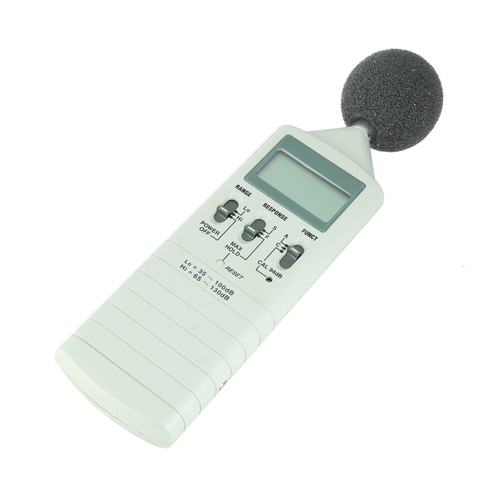Yesterday, we discussed how to use a sound level meter to perform area noise monitoring as part of your hearing conservation program. Today, we’ll look at when and how to use personal noise dosimetry to characterize worker exposures and determine what hearing protection, if any, might be required.

|
You may need to use personal noise dosimetry to characterize workers’ noise exposures if:
Employees or their representatives must be offered the opportunity to observe any measurements that are taken to characterize their noise exposure, and any employees who are exposed at or above the action level must be notified of the results of the monitoring.
- The results of your sound level meter measurements are borderline—workers may or may not be exposed above the OSHA exposure limits, depending on how they move through the workplace and what job tasks they perform.
- If workers are highly mobile.
- If sound levels are highly variable.
Get a grip on your slips, trips and falls with this FREE webinar! This webinar, on February 25th, will provide the attendee with information on recognizing slip, trip and fall hazards, both from a height and from same level. Register today!
Effective Personal Noise Dosimetry Sampling
Like any other form of personal exposure sampling, this type of measurement involves putting a noise dosimeter on the worker, who wears it throughout his or her shift. There are many factors that can affect the reading given by a personal dosimeter, so you will have to be vigilant about using this type of device. Personal dosimetry results can be thrown off by:
- Worker misuse. If you put the dosimeter on a worker’s jacket, and the worker takes the jacket off and leaves it on a chair for most of his shift, the reading will not accurately represent the worker’s exposure. Likewise, if the dosimeter is placed on the worker’s shirt and the worker puts on a jacket that covers the dosimeter, the reading will be inaccurate.
- Improper use of the dosimeter. Always read the documentation that comes with the dosimeter, and make sure that it is fully charged, properly calibrated, and placed as near as possible to the worker’s ear.
Free Safety Webcast: How to get a grip on your Slip, Trip and Fall Hazards. Slips, Trips and Falls are a leading cause of injury through our businesses and homes. Register today to learn how to avoid The most common instances of slips, trips and falls! Click here to register now!
- Artifacts. Dosimeters will pick up some events as “sounds” that are not sounds—for example, if the dosimeter pickup is banged against an object—even if the worker taps on the pickup with a finger—it will register this as sound and the reading will be inaccurately high. Wind can also register as noise; windscreens are sometimes available to control this factor.
Some personal dosimeters will give you a reading in dBA that is averaged over the sample time; others will give you a percentage dose. These readings may have to be converted to a time-weighted average using the computations found in Appendix A of the occupational noise standard, which is available online at https://www.osha.gov/pls/oshaweb/owadisp.show_document
?p_table=STANDARDS&p_id=9736.
Could you use more advice on job hazard analysis and characterizing hazards? You’ll find what you’re looking for at Safety.BLR.com.
